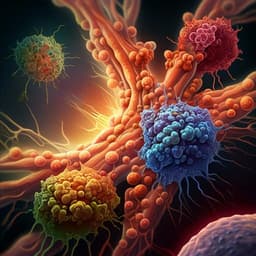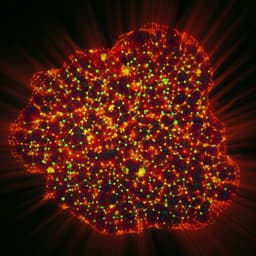
Medicine and Health
CD317 maintains proteostasis and cell survival in response to proteasome inhibitors by targeting calnexin for RACK1-mediated autophagic degradation
J. Cheng, G. Zhang, et al.
This groundbreaking study explores the pivotal role of CD317 in enhancing proteostasis and cell survival against proteasome inhibitors. Conducted by Jian Cheng and colleagues, the research unveils how CD317 knockdown disrupts calcium levels and drives cell death, positioning CD317 as a potential therapeutic target to combat drug resistance.
~3 min • Beginner • English
Related Publications
Explore these studies to deepen your understanding of the subject.







